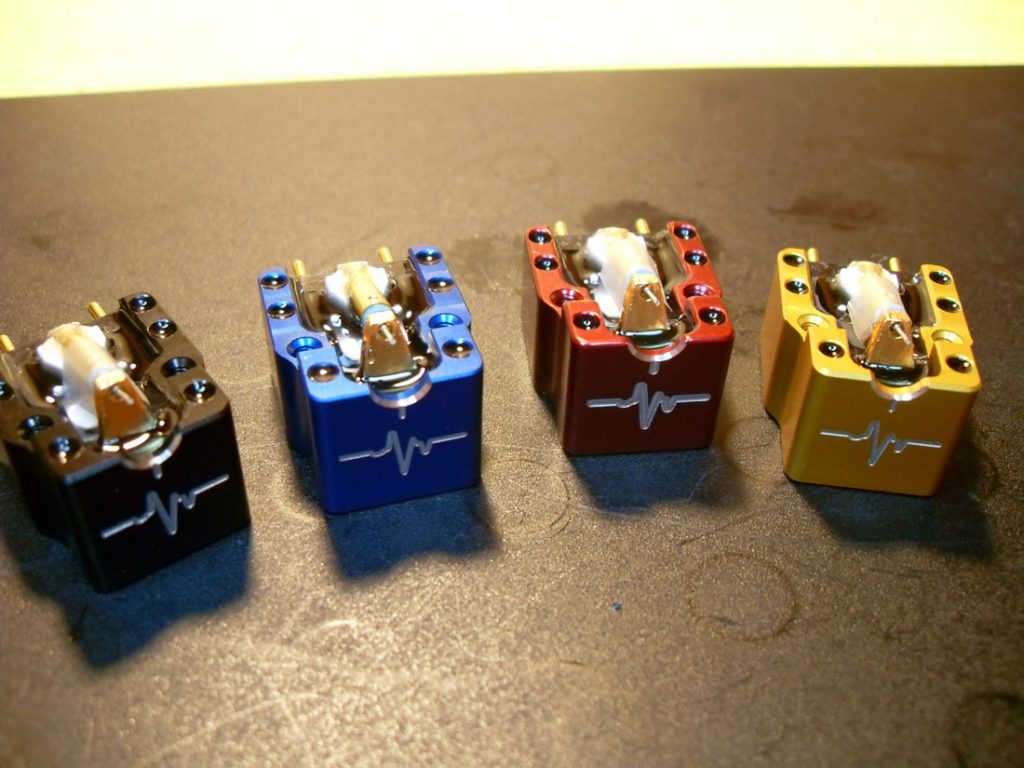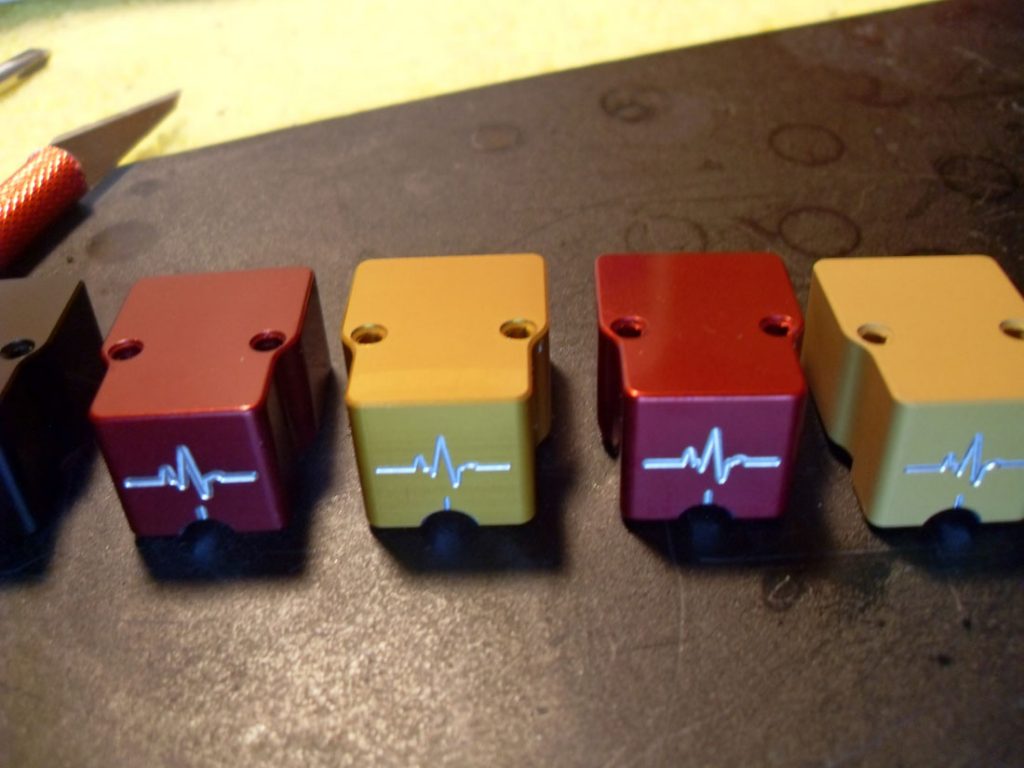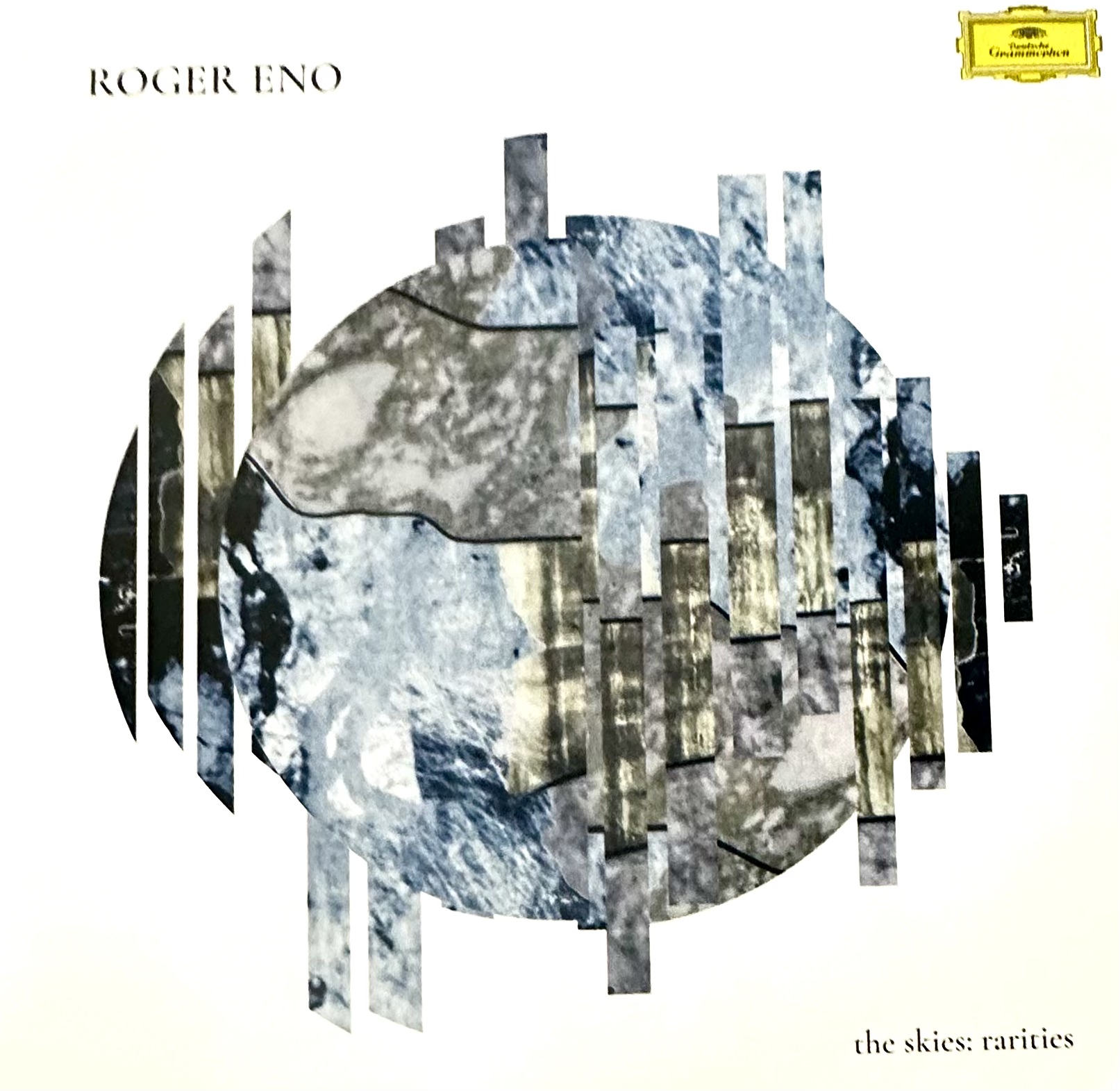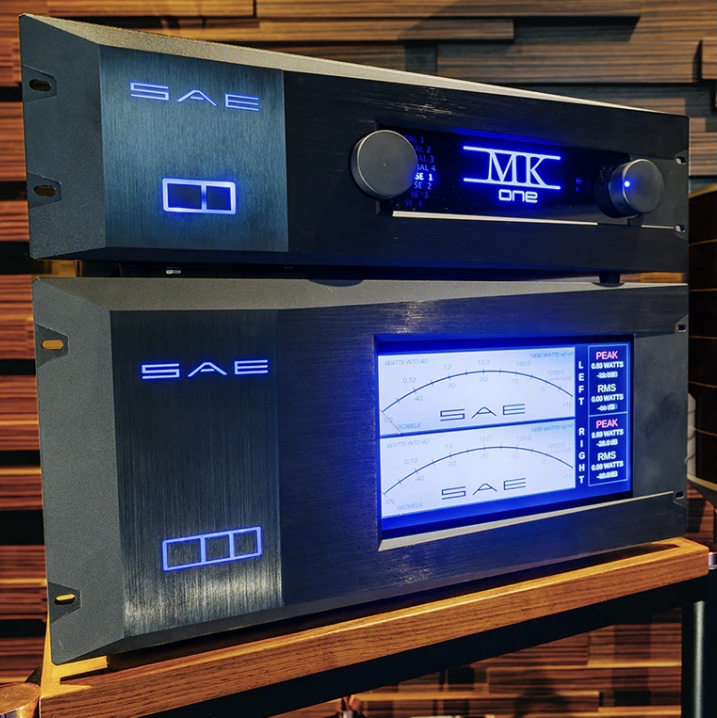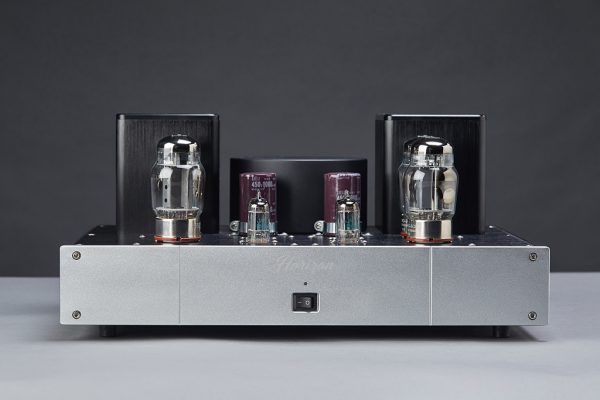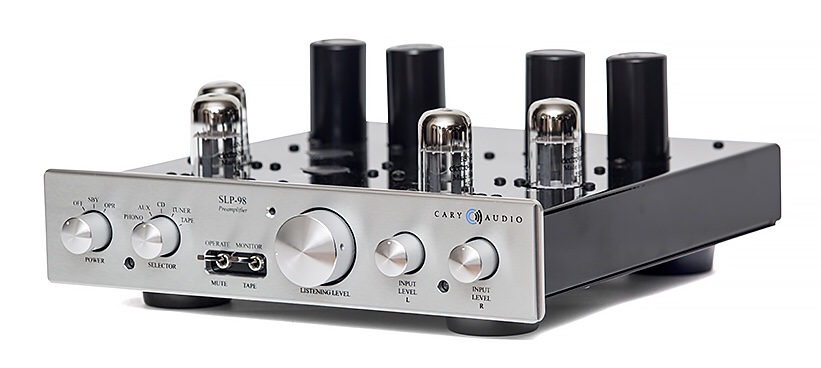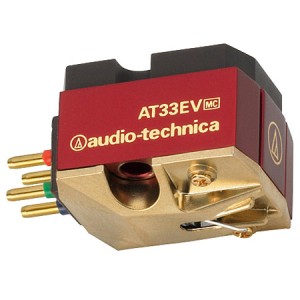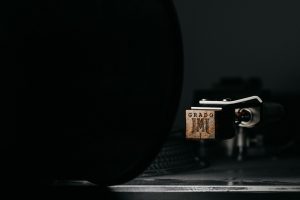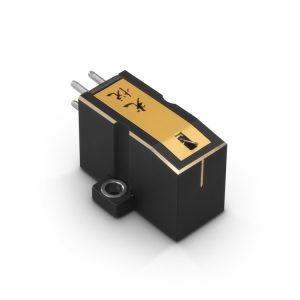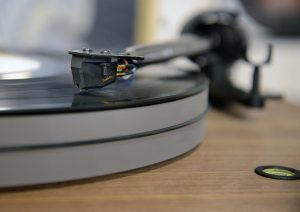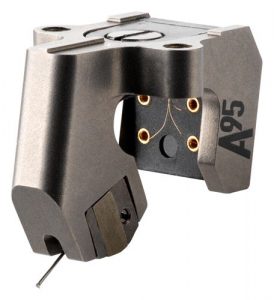Can You Build a Better Mousetrap?
This is not so much a review of a new cartridge as it is about what happens when you take a tried and true cartridge and make significant modifications to the body, cantilever, and stylus of the cartridge. To down play the impact of cartridge body design and material is to lack an understanding of the overall cartridge as a package. Just look at the existing field of phono cartridges and the materials selected for housings. Everything from plastic to exotic stone and unobtainable and cantaffordium materials!
Enter Paradox Pulse Guard R and SMR version. These are significant upgrades to the venerable Denon DL-103R cartridge. Being an owner of an original DL-103 gives me a interesting and informed perspective of the improvements wrought by the upgrade Terence Robinson has brought to a stalwart cartridge.
First a bit of insight into the internals provided by the 103. The Denon DL-103 is a MC cartridge with an output @ 1kHz of 0.3mV and a stated frequency response of 20Hz to 45kHz. Output impedance is 14 ohms. Channel separation at 1kHz is over 25db and channel sensitivity is 1 dB or less. The cantilever is aluminum and the stylus is a 16.5 micron special round diamond. Tracking force is recommended 2.3 to 2.7 g and the standard cartridge weighs in at 8.5g.
This is a cartridge that has always gotten solid reviews by both reviewers and owners. To condense things down, the highlights and low lights are this. The cartridge overall is a considerable bargain at its original price of $229. Very balanced overall delivery. A bit light in the bottom end, smooth and accurate at the midrange, and very good at delivery of highs. To quote friend Phillip Holmes, "Combine an easy tonal balance with good tracking, and you have sound that transcends a lot of audiophile qualifications."
The main complaint, if there is one, has always been about the round stylus. Many agree that the stylus is not the best to get every last detail out of a recording compared to a Shibata or a line contact. I am not here to debate that issue, just pointing out the cartridge has seen enough discussion that Denon gave consideration to offering the cartridge with a Shibata tip. What many agree upon is that the round tip is really great with mono records, hence my keeping mine for mono pressings. A great option to, say, the $15,000 Koestu Coral mono cartridge!
Search the internet for a plethora of reviews on various versions of the DL-103. It has an almost cult status and a great many people who have bought them never turn lose of them, and that is reason enough to check out owning one!
That leads me neatly into why you might consider the Paradox Pulse R SMR version of the venerable cartridge. So what do you get for an investment above and beyond the stock DL-103? That is what we are here to find out.
Terence has been offering modifications the Denon DL line for a while now, around five plus years to be a bit more precise. You can purchase the Paradox Pulse machined body and do your own conversion if you are handy at such things for $119 shipped in US. The least expensive way to do a Pulse Guard cartridge is to send Terence a new base DL-103 and pay the $200, then get the SMR yourself, he tells people to do this all the time. The cartridges always arrive like the one I received, and they always work perfectly whether they have the stock cantilever and stylus or the SMR upgrade according to Terence.
You can buy his basic DL-103 conversion, including the body and standard cartridge, for $500 shipped in US.
Our review sample is the pinnacle of what can be done with the 103R motor by Terence. The mods are the Paradox Pulse Guard body, Sapphire cantilever, Micro Ridge diamond (SMR), 42 micro dampers, potted and broken in. The review sample is red (while it is very attractive if not downright a beauty it isn't blue!) Price is $1100 and available in a veritable plethora of colors! The cartridge is broken in for 100 hours in the Guard body, and then sent out for the SMR, I note this because the MR diamond has 0 hours on it. The 100 hours is for wire and suspension break in.
In essence this is a Denon-103R, the latest and arguably the greatest iteration of the 103, re-bodied with a new and improved cantilever and stylus. That is no small degree of modification and upgrade. Perhaps one of the most important parts of the Pulse Guard body is the removal of most of the plastic body of the original cartridge body and the forty two micro dampers. Those dampers are what really kill resonance inherent in many cartridge bodies. All of this at a price of $1100 makes this a cartridge to definitely audition when thinking about the $1000 - $3000 cartridge market.
I mounted the Paradox to a carbon arm on my Droplet turntable. I had zero issues mounting the cartridge. While my arm is low mass, it has plenty of counter weight to handle the added weight of the cartridge weight. It's often been said that the DL- 103 benefits from a heavier mass tonearm, but I have never had any trouble in that respect while using a standard 103. There were zero problems at all in using the Paradox Pulse Guard R with my low mass tonearm. The square body makes it easy to handle while mounting which is always nice.
I decided to delve into listening sessions to evaluate the Paradox Pulse Guard R cartridge on its own merits. There is enough written on the DL-103R that I do not feel compelled to revisit that in detail, but rather I will give my observations based on the Paradox Pulse in the sphere of any $1100 cartridge on the market, and how it measures up in a quality / values situation on its own.
So, on with the listening sessions.
First up was an original pressing of Joni Mitchell's Court and Spark (Nautilus Records UNAU 11), arguably one of Joni's most commercially successful recordings. It is certainly full of snappy tunes and radio friendly songs. The title track "Court and Spark" has a lot of dynamic shifts. The Paradox Pulse Guard R handled the dynamic swings with ease and made the listening relaxed and soothing. Bolstered by Larry Carlton on guitar, Max Bennett on bass guitar, and John Guerin on percussion, the mix is incredible balanced thanks to the production skills of Joni, Henry Lewy, and Henry Levy's and Ellis Sorkin's engineering mixing work.
Next up, since I was in the Joni groove, was the track "Chinese Cafe / Unchained Melody" from the Geffen Records release of Joni's Things Run Fast (UGEF GHS2019). Easily my favorite Joni recording.
This song is amazingly complex in supporting instrumentation, dynamic swings, vocal subtleties, and a full range of effects. All of this swirls around Joni's singing and story telling. Larry Klein on bass, John Guerin on percussion, Toto's Steve Lukather on guitar, and Joni on piano and vocals.
This track combines original lyrics and music by Joni mixed with some lines from "Unchained Melody." Her deft touch on the piano is supported with bass lines by Larry Klein. The interplay is sweet and in perfect counterpoint. Larry's harmonics on the bass have an incredible and lengthy decay that I have not heard before, except on my Koetsu Azule. I attribute this to the detail the Paradox Pulse picks up. Lukather's guitar is obviously in a subservient role of adding mere texture. The important thing to note is that while Klein's bass is front and center and paramount to the song, it is the nuanced delivery of Lukather's guitar that pulls it all together, and on lesser cartridges it is lost in the mix. Not so with the Paradox Pulse. This time it was given its own space, and the air around the guitar gave it an ethereal presentation. The same ethereal feeling surrounded Joni's vocals. Her delivery is absolutely angelic and totally draws you in to the story of the pain of growing older, and realizing that you have made the journey from youth to being middle aged and beyond before you can actually realize it has happened. She makes you a believer. Perhaps I relate to well regarding the journey from 20 to 65! That being said, the delivery is so effective as to have me repeating the play over and over.
Soundstage presentation was superb. There was an air around Joni at the piano, and enough depth and width to give each of the musicians their proper placement. There was almost a sense watching her and the band perform on a small stage in an intimate environment. The best way to describe it was that it was as incredibly convincing as a live performance!
Being in that sort of groove I decided to spin the Crosby Stills and Nash first self titled album (Nautilus UNAU 48) and most specifically the cut "You Don't Have to Cry." Without a doubt, one of the greatest tests of any cartridge is how it delivers vocal performances. Will it deliver the subtleties of sibilants, (Sibilants are fricatives of a higher amplitude and pitch, made by directing a stream of air with the tongue towards the teeth), the breathing, pitch and volume in relation to other instruments and vocalists in the recording. This is a great track to demonstrate the delivery of those things by a vocal trio often considered to be some of the best of all time. Everything was there in the delivery thanks to the Paradox Pulse Guard R. A minimalist recording of acoustic guitar, bass guitars, and percussion clearly designed to put the spotlight on these 3 amazing singers. It was easy to pick out the three voices, distinct, one from the other. I have listened to this song through lessor cartridges, and the vocals were a bit more smeared and not as distinctly different in the presentation as with this cartridge, and this includes the stock DL-103. Not only were the vocals more detailed with respect to the individual singer, but some of Stephen Still's guitar work became more elevated and obvious. His harmonic chimes, often barely perceptible in some presentations, are so clear and ringing with incredible tone and decay. His fill lines are also more noticeable and sweeter while using the Paradox Pulse Guard R. I will credit the absence of resonances provided by the metal body and additional dampening that the Paradox Pulse body provides. It is exceptionally noticeable. The music is fuller and the details are far more present.
Onto my stalwart recording, Eva Cassidy's "Somewhere Over The Rainbow" from the album Songbird (Blix Street Records 180 gram vinyl ABLX 10145). This is a cut I use for every review. Yes it still brought me to tears and it delivered every single nuance of the recording that I could ask for. I did notice a little more detail with the Koetsu Urushi and a bit more warmth and texture, but that is now a $6k cartridge that is capable of wrenching every single detail out of recording. If the Koetsu is a ten plus, the Paradox Pulse Guard R is a solid eight and three quarters! At one sixth the cost. The searing and soaring vocals on this track offset by the acoustic guitar are in perfect balance, and given the proper weight. Eva's vocals are so powerful towards the end during the civil crescendos that it is like a sledge hammer in the gut.
Upon listening to Rodrigo y Gabriela's "Terracentric" from the album Mettavolution (ATO Records, AATO 49724), the presentation was just stellar. Not only the texture of the guitars nylon strings, but the flesh of the fingers striking the strings was present and distinctive. The vicious percussive nature of the track was front and center without overriding the rest of what was happening. It simply existed in the natural supporting way it should have. Providing a pounding and solid back beat for the rest of the music it supported the rest of the song in a dynamic fashion, and kept the entire song on track without running over it completely. The timing and the syncing of the two guitarists is so spot on that there is no gap during the breaks. Everything is running like a Swiss watch and exceptionally well balanced. The Paradox Pulse Guard R delivers all the dynamics, percussiveness of the guitars, and the timing of the play all within a proper soundstage leaving the listener feeling as though they are in a love performance!
Progressing on to something with more punch and slam, especially in the percussive part, I moved to Joe Satriani's "Satch's Boogie" from the album Surfing With the Alien. The Paradox Pulse did a very impressive job of handling the the dynamics of the percussion on the track. Driving kick bass with adequate bloom and without bloat. Sharp and crisp delivery and punch in the gut delivery with quick and proper decay. Snare drum hits were firecracker sharp without hesitation, and cymbals were simply shimmering. Joe's guitar simply screaming away with amazing sustain. Using the effects he does, (his own signature sustain effect which I own and use) creates an infinite and soaring sustain in his guitar, and makes pinch harmonics come alive. All of the nuance that it takes to get that out of your guitar is captured neatly by the Paradox Pulse Guard R. Most notably, I noticed a significant difference to the standard DL-103 in the subtlety of note bends. Especially 3-4 note bends. The stylus tracks exceptionally well, and rides them up and down the bend seamlessly!
So far we are riding a high train of folk rock, female vocals, classical nylon string guitar, and hard pounding, soaring guitar pyrotechnics with equally explosive percussion without a whimper of complaint or difficulty handling any and all with ease.
The last test was to place the Istvan Kertesz and Vienna Philharmonic Orchestra recording of Dvorak's From The New World Symphony No. 5 in minor Op.95 (Decca ffs SLX 2289 in 180 gram audiophile pressing). First movement Adagio and Second movement Largo.
Many consider this to be one of Dvorak's most important compositions. The Largo in particular is the basis for the song "Going Home," and is said to be inspired by American Folk melodies and especially Afro-American songs. That being said they are just as akin to Bohemian folk music.
Anyone familiar with this Dvorak work knows that the first movement, "Adagio," is a full on frontal orchestral maelstrom unleashed after brief and soft intro, presented mostly with wind instruments. Then suddenly we get the string section and tympani attack coming in full force to keep you from being lulled into a quasi sleep state. The dynamics are huge, and the pace is somewhat furious. The Paradox Pulse handles that transition with light speed and a deftness that made it clear the cartridge was in charge of delivering the music as accurately, dynamically, and with requisite wide swings in sound level and dynamic thrust. The delicacy of the strings in softer passages never gave up a micron of detail when having to deliver in between massive swells of overall string attacks, with cannon fire percussion blasting you out of your seat. Soundstage and imaging were first rate. Large and expansive and well beyond the boundaries of the speakers. Brass instruments had the perfect bite, and the tone had real texture and grit to it. I do not pretend to be a classical music connoisseur, but I do have certain performances that I like, and this is one of those recordings I love. The second movement, "Largo," is a much softer, gentler mix of strings, brass, and woodwind instruments in a lilting melody. It is the kind of music I prefer on a cloudy and cool day. The sweeping nature of the movement is like being gently rocked by waves on a boat. The swells give you just enough movement to be lulled into a state of relaxation, and a feeling of general well being. There are brief big swells of percussion and notable instrument attack that keep you from drifting off all together. Primarily, towards the end of the movement and just as you sit up and take notice again, the gentle passages return to you to the end of the journey.
One thing is for sure, the Paradox Pulse Guard R does justice to everything I threw at it, and there was a whole lot more than the selected examples. I cannot say that anything that I set the stylus down on did not sound superb. At the end, the question becomes, "is it a better mouse trap" than the DL-103? That is an easy answer. It most definitely is possible. Staring with a very good basic mouse trap in the DL-103, Terence has managed to make a much better mouse trap out of the basics cartridge. MUCH better indeed! Is it the last word in micro detail, macro soundstage, and the definitive performer in center, laser image focus? No, it is not. That is the rarefied air for $5000 and up cartridges. However, when auditioning cartridges in the $1000 - $3000 range, this cartridge acquits itself especially well, and gives you a whole lot more value than the $1100 price tag suggests. I truly believe that an audiophile looking for a cartridge in this price range would be remiss if they did not carefully consider the Paradox Pulse Guard R SMR cartridge. This is a cartridge that could satisfy 90% of the audiophile communities needs and series for a very, very long time. Personally, I see it as a smashing bargain and will be sad to see it leave. Very highly recommended!
Paradox Pulse Guard R SMR Cartridge
Retail: $1100
Paradox Pulse
760.245.8435





